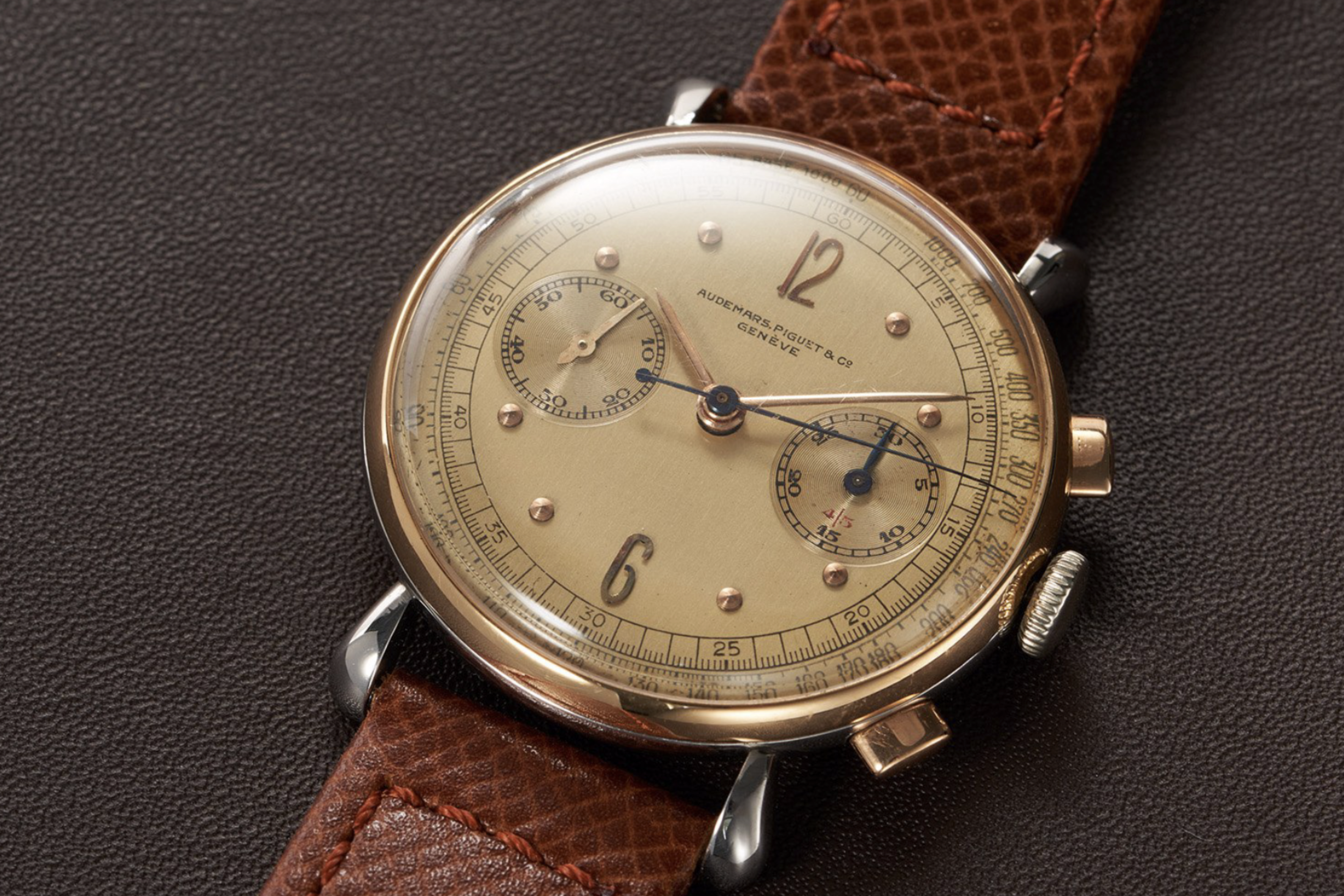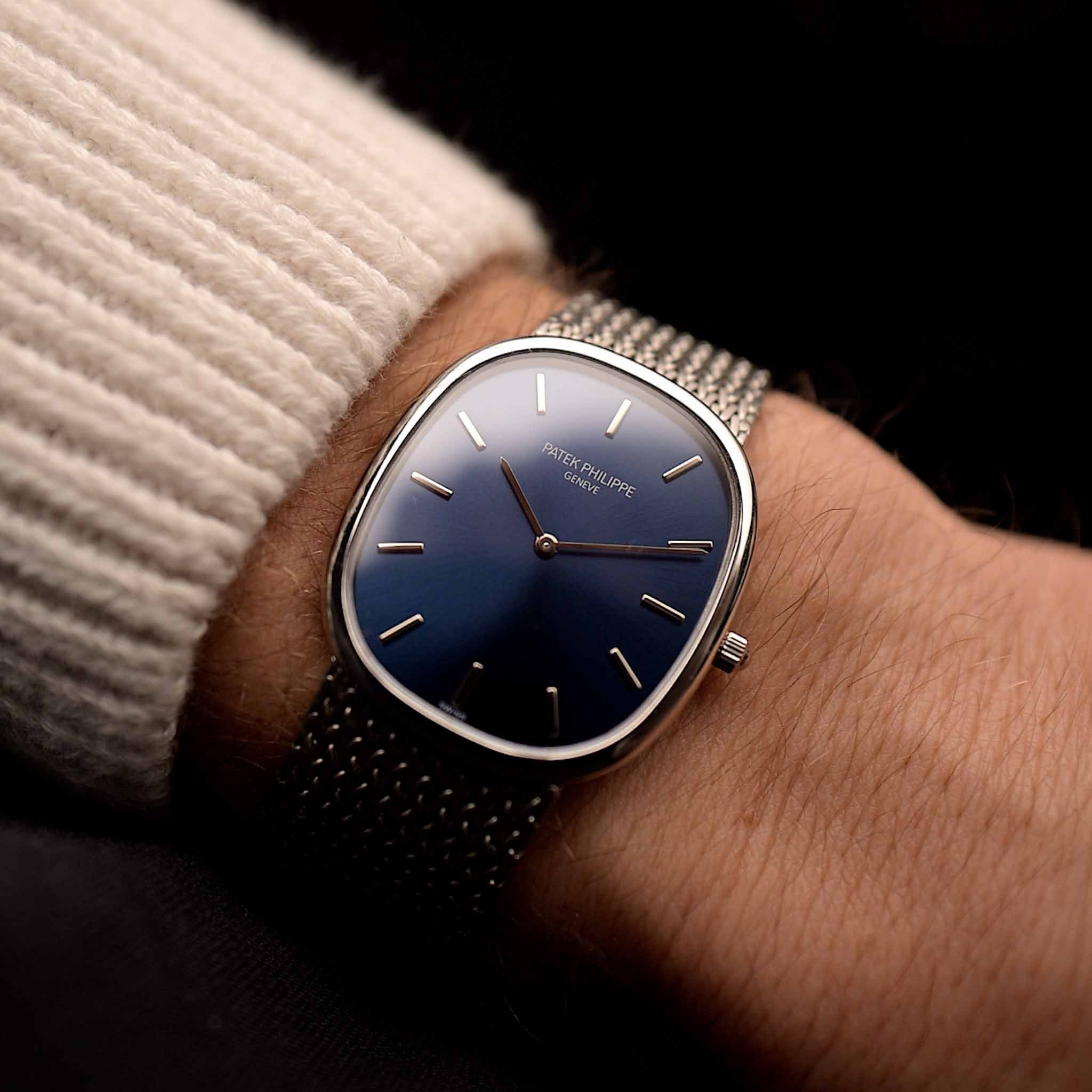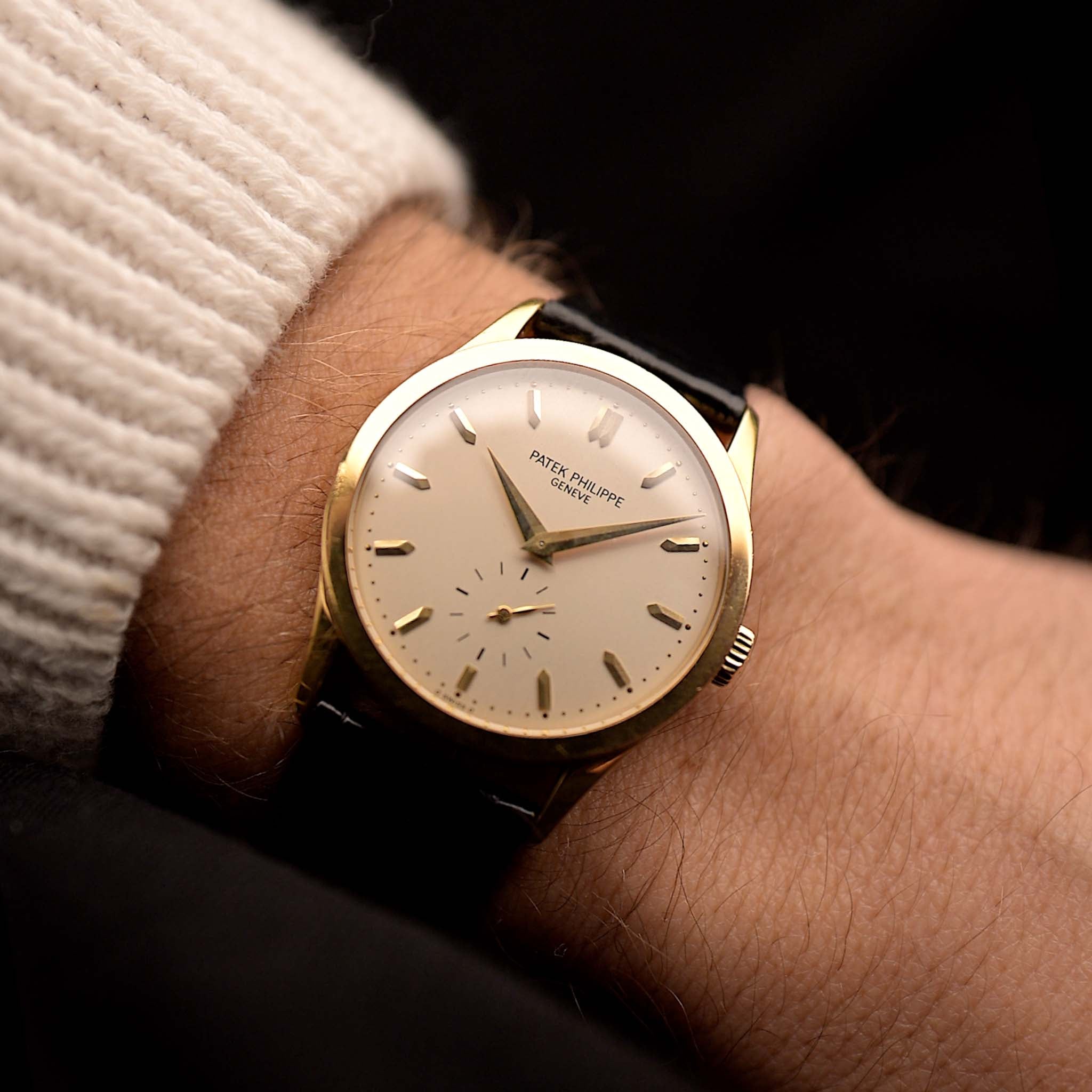It's 2023 and the year of the Royal Oak is over. We can finally start talking about other amazing pieces originating in La Brassus. Importantly, the conscious history of the brand often seems to start only in 1972 with the launch of the Royal Oak but of course this is a manufacturer with a far longer history. So what did actually happen before 1972? And what made the brand an important player for wristwatches in the first place?
January 11, 2023
The History of Audemars Piguet Wristwatches - The Early Days Part I

Marcus Siems @siemswatches
Collector, Author, Data Analyst
It's 2023 So the year of the Royal Oak is over and we can finally start talking about other amazing pieces of the Maison from La Brassus. Importantly, the conscious history of the brand for many people seems to start only in 1972 with the launch of the RO but of course this is a manufacturer with a far longer history. So what did actually happen before 1972? And what made the brand an important player for wristwatches in the first place?
Audemars Piguet is one of the most coveted watch brands of our time. Based on the most recent Morgan Stanley survey and analysis AP was the watch brand with fourth highest revenue, selling around 45,000 watches in 2021[1]. Clearly a big player today.
But let's take a look to the past, how did the AP history, production and tradition look like in the 20th Century, particularly before the introduction of their workhorse Royal Oak in 1972? Already back then AP was considered part of the "holy trinity" - the three most sought after and supposedly highest quality watch manufacturers of the last Century - among Patek Philippe and Vacheron Constantin.
 One of the finest timepieces of its, and potentially one of the greatest design ever conceived. The unique Audemars Piguet chronograph N524 "Cambree" retailed by Astrua in 1936. 37.7mm of pure joy! Photo Courtesy of Audemars Piguet 20th Century Complicated Wristwatches.
One of the finest timepieces of its, and potentially one of the greatest design ever conceived. The unique Audemars Piguet chronograph N524 "Cambree" retailed by Astrua in 1936. 37.7mm of pure joy! Photo Courtesy of Audemars Piguet 20th Century Complicated Wristwatches.
So what made Audemars Piguet watches so special? There are several points I want to address here and some (quantitative) examples I want to make but sometimes the contemporary ads can make the point quite clear from the get-go:
 Vintage AP ad from the 1950s: "Audemars Piguet creations are produced in small series and intended for the connoisseur of fine watches"[3].
Vintage AP ad from the 1950s: "Audemars Piguet creations are produced in small series and intended for the connoisseur of fine watches"[3].
So the idea apparently has been to focus on mechanical excellence and not on broad appeal. Looking into the numbers we find that AP's annual production went from 310 in 1910, to 515 in 1930, and 298 in 1950, to around 5494 watches in 1970[2]. So for most of the 20th Century AP watches have indeed been extremely rare.
That's of course not a feat by itself so let's take a closer look how AP achieved to produce "fine watches" and what exactly this statement might relate to: From the development of early complicated and high-precision wristwatches, over ultra-slim pieces to the development of their first automatic movements.
1) Complicated Wristwatches (1921-69)
It is probably no secret that a large part of Audemars Piguet's legacy lies in their complication timepieces. In 1921 the brand produced their first full calendar movement. Interestingly though, until 1969 only a grand total of 188 (including 11 perpetual calendars with leap year indication) left the halls in La Brassus[4]. So it seems quality and success is not measured in production quantity.
 Figure 1. Distribution of all Calendar Watches produced by Audemars Piguet between 1921 and 1969. Circles indicate movements and squares indicate fully assembled watches. Data from Audemars Piguet 20th Century Complicated Wristwatches.
Figure 1. Distribution of all Calendar Watches produced by Audemars Piguet between 1921 and 1969. Circles indicate movements and squares indicate fully assembled watches. Data from Audemars Piguet 20th Century Complicated Wristwatches.
There we are again with exclusivity; only 188 calendar watch movements and similarly only about 307 chronograph wristwatches (including 20 double complications)[5].
Overall, we see three distinct eras of movement development: The first series of GSHM10 movements from 1921-30 (n = 108), the second series RSQ 9/10 from 1946-50 (n = 69) and the perpetual calendar movement VZSS QP from 1947-57 (n = 11, includes the first watches with leap year indication[4,6]). As a side note; this also means that most of APs vintage calendars are actually powered by movements built in the 1920s.
 Potentially one of the historically most relevant Audemars Piguet pieces - the reference 5516, the first full perpetual calendar wristwatch including the leap year indication (here at 6 o'clock). Photo Courtesy of Audemars Piguet 20th Century Complicated Wristwatches.
Potentially one of the historically most relevant Audemars Piguet pieces - the reference 5516, the first full perpetual calendar wristwatch including the leap year indication (here at 6 o'clock). Photo Courtesy of Audemars Piguet 20th Century Complicated Wristwatches.
With the great Depression starting in 1929 we see a quick drop in calendar movement production, which led to a complete halt from 1931 onwards. And until after the Second World War we do not see the production of any new movements. But this doesn't mean that no calendar timepieces were assembled during that time.
Generally APs full calendar watches can be grouped into four categories: The day, date and month could be indicated by hands, apertures or a mixture of the two. The fourth category would be the more complex Quantieme Perpetual (QP), the perpetual calendars. We can see two things. First, AP assembled at least one calendar watch between 1924 and 1969 with the only exceptions being the war years 1939-41, 1943-44, as well as 1946 and 1958. Second, they indeed didn't case more than 13 movements a year... ever... until after 1969[4].
 Two absolutely stunning examples. On the left you can see a 1941-42 triple calendar with moon phase and chronograph. On this piece you can see that hands are used to indicate day, date and month. On the right you can see a 1920s triple calendar with moon phase (ref. 5504) bearing an RSQ 9/10 movement. For this example the date is indicated by a hand while day and month are in apertures at 11 and 1o'clock, respectively. Photo Courtesy of Hodinkee.
Two absolutely stunning examples. On the left you can see a 1941-42 triple calendar with moon phase and chronograph. On this piece you can see that hands are used to indicate day, date and month. On the right you can see a 1920s triple calendar with moon phase (ref. 5504) bearing an RSQ 9/10 movement. For this example the date is indicated by a hand while day and month are in apertures at 11 and 1o'clock, respectively. Photo Courtesy of Hodinkee.
By far the most popular calendar layout featured hands to indicate the calendar functions (n = 98), followed by a mixture of hands and apertures (n = 39), apertures only (n = 27) and the QP (n = 11). A total of only 175 known AP calendars from that era[4].
2) The VZ Era (1930s-1959)
Beyond their complicated watches AP has further always been invested on the polar opposite, classic time-only pieces. If you're already slightly familiar with early AP wristwatches you may have stumbled upon the initials "VZ". It describes watches built around the manually wound VZ movement - originally developed as the Valjoux 23[3,7].
Well, the Valjoux 23 is actually a chronograph movement, but AP had other plans with this caliber. They stripped down everything, implemented new and different parts from in-house and contractors and pushed it to become one of the most accurate time-only movements of its time.
 It might not appear like it but this beauty is really built to last. The high-precision movement is far ahead of the curve for its time and the design... with the two-tone dial and the simple baton hands paired with the extravagant crab lugs this makes one heck of a timepiece. Photo Courtesy of Christie's.
It might not appear like it but this beauty is really built to last. The high-precision movement is far ahead of the curve for its time and the design... with the two-tone dial and the simple baton hands paired with the extravagant crab lugs this makes one heck of a timepiece. Photo Courtesy of Christie's.
Think about it as a manually wound movement on steroids! As a chronograph ebauche the VZ had a stronger power supply to handle the friction added by the stop-watch functionality[3,7]. Without the chronograph module and the altered geometry AP had the perfect foundation for its high-precision watches.
 The epiphany of time-only movement architecture of the 1950s. A rare Audemars Piguet 13 ligne VZ "Super" movement, number 49911. Photo Courtesy of Christie's.
The epiphany of time-only movement architecture of the 1950s. A rare Audemars Piguet 13 ligne VZ "Super" movement, number 49911. Photo Courtesy of Christie's.
Over its 29 year production run AP produced approximately 2000 time-only VZ timepieces. That's just shy of 70 watches a year on average! Yet why is it so important? It shows the dedication of the brand to establish themselves as the watchmaker that goes one step further. It's not only about having a nice dress watch but actually providing one that sets itself apart from the competition by the mechanical quality.
Interim Summary
We can clearly see that there's a lot more to vintage Audemars Piguet wristwatches than just the Royal Oak. However, we can already trace some of the post-1972 DNA back to these early pieces. The high-precision movements that were conceived in collaboration is one aspect.
The other being high complications like calendars and grand complication pieces. Thinking beyond the Royal Oak, other extremely successful pieces of the 1970s, 80s and 90s particularly perpetual calendars come to mind. A complication deeply rooted in Audemars Piguet's approach to watchmaking.
However, that's not all of it. There're still more principles that make this brand great and deserving of the membership in the "holy trinity" club. In Part II I'll be explaining what else the powerhouse from La Brassus had up their sleeves.
- You can find the full story here: Part I & Part II - or check out our inventory.
References
[1] 2021 Watch Industry Results; Vittorino Loreto, Italian Watch Spotter;
https://italianwatchspotter.com/2021-watch-industry-results/?lang=en
[2] Precious Objects - vintage Audemars Piguet; Michael Mehltretter, WatchTime Magazine;
https://www.yumpu.com/en/document/read/30286629/wt-2005-05-vintage-audemars-piguet
[3] Before the Royal Oak - A Closer Look at Several Unforgettable Vintage Audemars Piguet Watches; Josh Rankin, Stetz&Co;
[4] Audemars Piguet 20th Century Complicated Wristwatches; Sebastian Vivas & Michael Friedman, Audemars Piguet, La Brassus, 2018;
[5] Audemars Piguet Chronographs Through The Years; Josh Rankin, Wristcheck;
https://wristcheck.com/discover/vintagecheck/audemars-piguet-chronographs-through-the-years
[6] The Curious Legacy of Audemars Piguet Calendar Watches; Jonathan Ho, Deployant;
https://deployant.com/the-curious-legacy-of-audemars-piguet-calendar-watches/
[7] Holding the Ligne - A Visual Evolution of the Audemars Piguet 13 Ligne VZ; Josh Rankin, Stetz&Co;
All rights on text and graphics reserved to the Author.




























Leave a comment